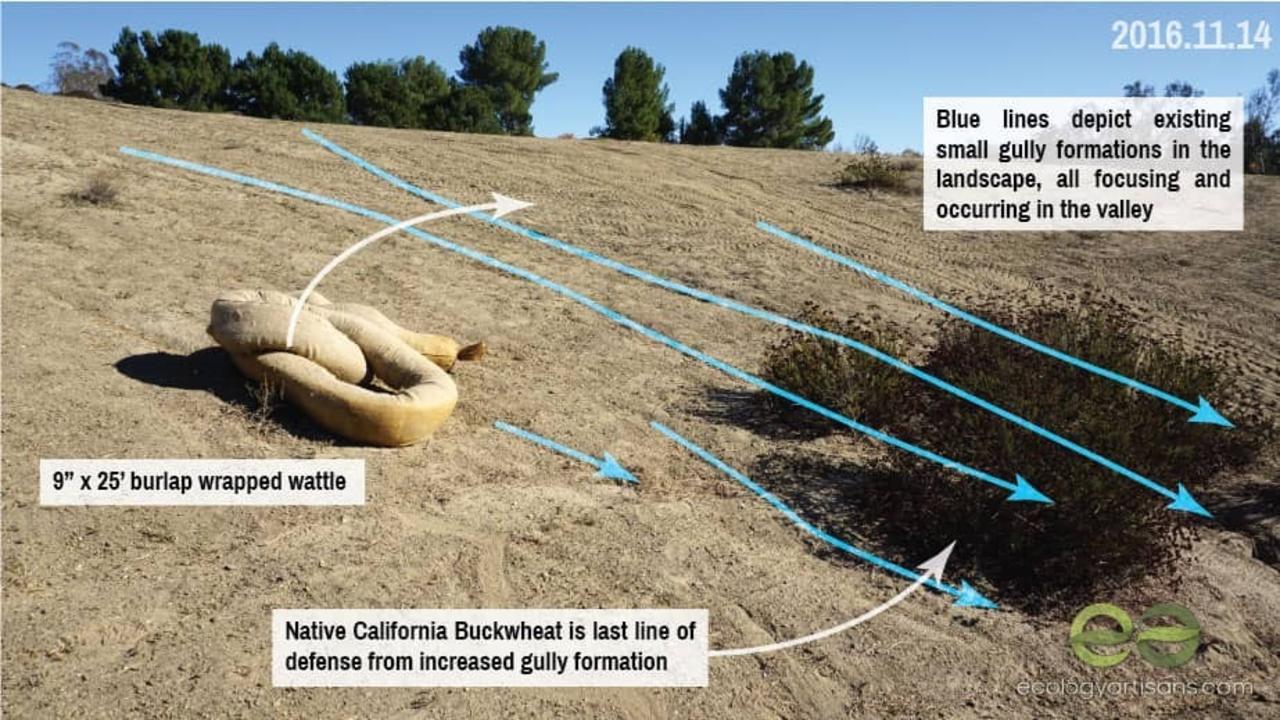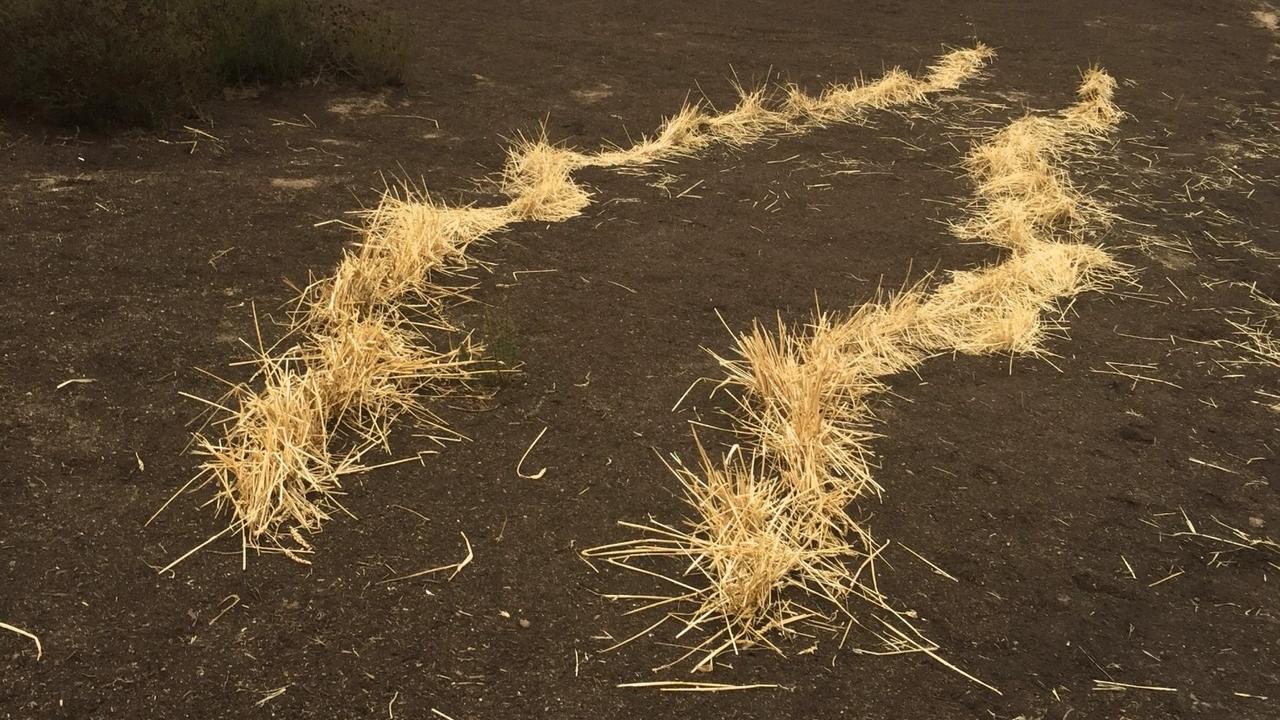5 Keys To Building Healthy Soil

Everyday we hear of soil scientists, farmers, and gardeners alike discovering something new about the rich world under our feet: soil! Soil is an amazing living ecosystem in which we rely so heavily on for our food, medicine, shelter, and clothing.
Our work at Ecology Artisans is heavily influenced by soil regeneration pioneers such as Dr. Elaine Ingham, Gabe Brown, Dr. Christine Jones, Colin Seis, and Darren J. Doherty. We as a company believe that healthy soil solves many issues that our society faces. Stormwater runoff, droughts, and soil loss become mitigated when we have healthy soils that can store water for longer periods of time. Not to mention that healthy soils create healthy food, which leads to a healthier, less disease prone and robust society.

A 1% increase in organic matter in our soil increases water holding capacity by 25,000 gallons per acre. Photo courtesy of Kiss The Ground.
Whether you are a backyard homesteader, native plant landscape lover, or large scale fa...
Effective Erosion Control: Straw Wattle

Straw wattles (aka fiber rolls) are fiber filled mesh tubes used to interrupt and slow water descending a slope through sheet flow and/or minor rill/gully formations.
Straw Wattles

Straw wattles help slow, spread and sink water in addition to capturing sediment and other runoff.
Used extensively in transportation and construction as best management practice (BMP), straw wattles are useful tools for effective runoff and sediment control. Coupled with erosion control techniques like mulching, jute mats, soil pitting or fish scale straw mulch, wattles help keep runoff and sediment for moving further downslope on a site.
Straw Wattles / Fiber Rolls

Cross section of proper wattle installation using five-stake method (for 25' wattles).

Our suggestion of overlapping wattle ends. You can also butt ends together, just monitor to ensure no water is channeling through the ends.
Resources abound covering various approaches towards wattle installation. Google "bmp straw wattle [YOUR ST...
Effective Erosion Control: Fish Scale Straw Mulch

With record breaking rain and snow across California during the 2016-2017 winter, residents are being confronted with devastating and costly erosion control issues. We will be covering some simple, do-it-yourself effective erosion control techniques to help you prepare for future rain events and limit the amount of soil and water loss off your site.
Fish Scale Straw Mulch

Lines of fish scale straw mulch installed to test sediment capture and erosion reduction.
We first learned about fish scale straw mulch* as an erosion control technique in David A. Bainbridge's essential tome on erosion control, A Guide for Desert and Dryland Restoration: New Hope for Arid Lands. Its simple process, materials and installation made it one of our top choices for DIY erosion control projects. *The term "fish scale" comes from the curved shape cut from the spade entering the soil.
Treatment Summary
Weed-free wheat or rice straw fish scale rows on contour are inexpensive and easy to install. The...
Soil Erosion Case Study: Meadowview Open Space
Preventing and treating soil erosion must be the primary focus for any land tender, land owner, community or society. When we neglect soil loss for any myriad reasons (short term economic gain, apathy, ignorance, etc.), we jeopardize the possibility for future generations to cultivate and nourish themselves. As ecological land designers, we are trained to see the characteristics of degraded land and to provide treatments to rehabilitate and reinvigorate it.
Soil Erosion is No Joke
Land and environmental degradation is the number one cause of life migration. When food no longer grows on land, life moves on. Humans are no different, yet our short historical attention span has shown us to forget this pattern. I highly recommend reading Dirt: The Erosion of Civilizations by David Montgomery to learn more about the importance of protecting soil (or watch his lecture below).

Any increase or decrease in these three factors will either increase or decrease erosion in landscapes.
Los...
Watershed Restoration

Our company Ecology Artisans is quite a unique animal. Our tagline is, "Ecological landscape and farmland design and development company." We know it's a mouthful, but it doesn't even start to encapsulate everything we do. Our company is helping redefine how we associate and interact with our landscapes. Many ecological designers refers to their place of origin by relating to their watershed, for example, the Santa Ana watershed. Here at Ecology Artisans, we are big believers that bio-association is extremely important if we are really going to solve the ecological issues that we face today.

The Carlsbad Watershed - Photo Courtesy Of The Carlsbad Watershed Network
Watershed Restoration
We need to start thinking of ourselves, our cultures, and our families as a part of nature, instead of separate from it.
What does bio-associate mean? It's a manner of thought and personal connection to the world around us and our role within the associated web of biological and mineral cycles all ...
